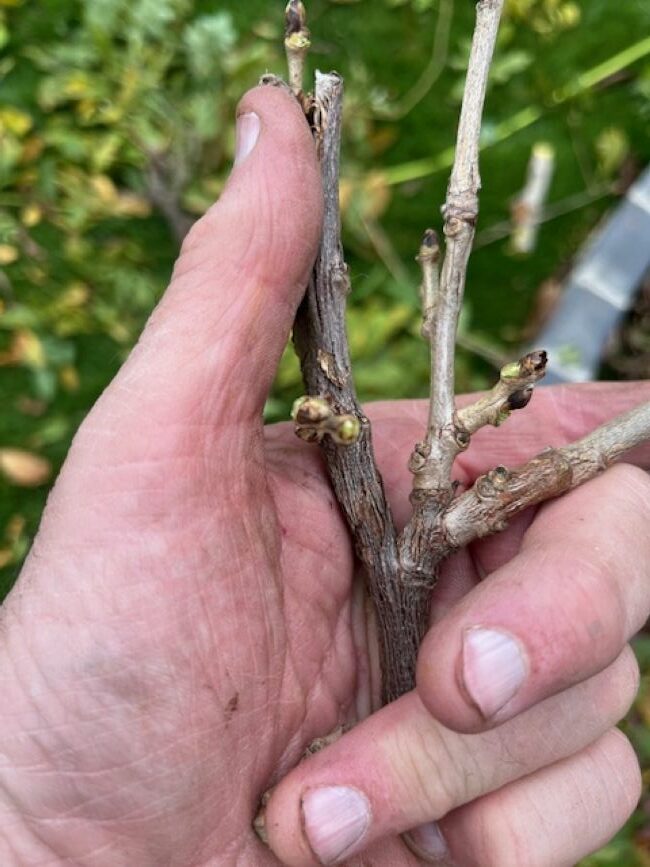Wisteria – Late Season Care Tips for Wisteria

Wisteria flower nodes and flowering buds/spurs
- Summer shoots have been cut back.
- Feed now with liquid tomato fertiliser because of the high levels of potash and Epsom salts (two spoonfuls per two gallons of water). This has high levels of magnesium that helps with flowering
- Feeding now encourages flower bud development for next spring.
- Check wires on the plant to ensure they aren’t cutting into branches.
- Remove any dead branches.
Wisteria is a stunning addition to any garden, but it requires thoughtful care to promote vigorous flowering and overall plant health. As we approach the later months of the year, here’s how to give your Wisteria the attention it needs to flourish next spring.
1. Prune Summer Shoots
By now, summer shoots should have been cut back. This keeps the plant manageable, encourages stronger growth in the main branches, and promotes better flowering next season. Regular pruning is essential to maintain the structure and health of your Wisteria, preventing it from becoming unruly or top-heavy.
2. Feed with Tomato Fertiliser
Autumn is the perfect time to feed your Wisteria. A liquid tomato fertiliser is ideal because it contains high levels of potash, which boosts flower bud development. Mix in two spoonfuls of Epsom salts per two gallons of water, providing an additional magnesium boost that will help strengthen the plant and encourage flowering. This combination enhances nutrient uptake, giving Wisteria the reserves it needs to produce abundant blooms next spring.
3. Inspect Plant Support Wires
Wisteria can grow quickly, and the supporting wires or trellises it relies on may shift or tighten as the plant expands. Take a moment to check that no wires are cutting into the branches. Loose or adjust any that are too tight, allowing room for growth without damaging the plant’s structure.
4. Remove Dead Branches
Removing dead or damaged branches in autumn improves airflow around the plant and reduces the risk of disease, especially over winter. Cut back to healthy wood to encourage robust new growth next season and to keep the Wisteria looking tidy and strong.
With these simple steps, your Wisteria will be well-prepared to put on a magnificent display next spring, rewarding your efforts with a cascade of blossoms and fragrance.